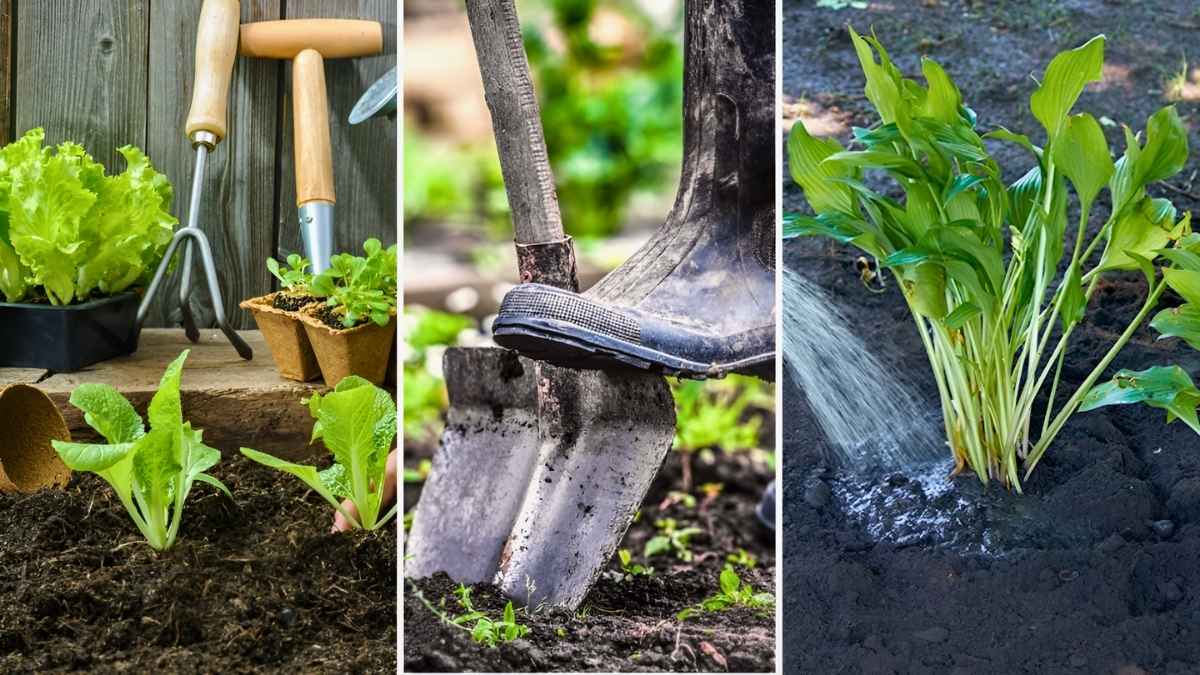Join on WhatsApp
Get the latest updates directly on WhatsApp – motivation, news & more!
As the growing season winds down and autumn slips into early winter, the focus in the garden shifts from planting and harvesting to preparation and protection. One often-overlooked aspect of this seasonal transition is soil health specifically, compacted soil. Whether you’re working in a garden bed, lawn, or container, compacted soil can silently suffocate your plants, hinder water absorption, and set the stage for a sluggish spring.
But the good news? You still have time. With the right steps, you can revive your soil before winter sets in fully, giving roots room to breathe and ensuring your plants get a strong, healthy start next season. Think of it as a rescue mission one that begins below the surface.
Understanding Compacted Soil
Compaction happens when soil particles are pressed tightly together, squeezing out the spaces where air, water, and roots would normally move freely. This usually results from heavy foot traffic, machinery use, poor drainage, or even excessive tilling over time. The result is a dense, crusty surface with poor structure, low fertility, and limited microbial activity.
In compacted soil, roots struggle to expand. Water tends to run off rather than soak in. Oxygen levels drop, and beneficial organisms like earthworms disappear. It’s a slow suffocation and your plants feel it long before you see it.
Recognizing the signs of compaction is the first step. Stunted growth, yellowing leaves, pooling water after rain, or hard, cracked soil surfaces all suggest that your garden is gasping for air.
Why Now Is the Time
Autumn and early winter offer a unique window of opportunity to address soil compaction. The ground is still workable, but most plants are dormant or slowing down. This means you can dig, amend, and aerate with minimal disruption to roots. Plus, the freeze-thaw cycles of winter will naturally help loosen the soil even further if you’ve taken the time to start the process.
Fixing soil compaction now sets the stage for better drainage, deeper root growth, and more resilient plants when spring arrives. It also helps avoid that mad rush in early spring when everything seems to need attention all at once.
Step One: Loosen Gently
The first step in improving compacted soil is to physically loosen it but gently. This isn’t the time for aggressive tilling, which can actually make compaction worse in the long run by destroying soil structure. Instead, use a garden fork or broadfork to aerate.
Insert the fork into the soil and rock it back and forth to lift and loosen the ground without flipping it over. Work in rows, spacing your insertions every six to eight inches. This creates air pockets, breaks up dense layers, and helps water infiltrate.
For lawns, consider a manual or mechanical aerator with hollow tines that remove plugs of soil. Leave the plugs on the surface they’ll break down over time, feeding the lawn naturally.
Step Two: Add Organic Matter
Once the soil is opened up, it’s time to feed it. Organic matter is the key to long-term soil health. It helps bind particles into a looser structure, encourages microbial life, and improves both drainage and moisture retention.
You can use compost, well-rotted manure, leaf mold, or even shredded leaves. Spread a thick layer about two to three inches over the loosened soil and gently rake it in. In garden beds, this will settle in naturally over winter. In lawns, a light topdressing can be worked in with a stiff broom or rake.
Resist the urge to dig or mix deeply. Let the soil organisms do the work. Worms, microbes, and fungi will move the material downward, rebuilding structure from within.
Step Three: Mulch for Protection
Once your soil is loosened and fed, it’s important to protect it through the winter months. Bare soil is vulnerable to erosion, compaction from rain and snow, and nutrient loss. A good mulch layer acts like a blanket, keeping the soil covered and buffered from the elements.
Use straw, shredded bark, wood chips, or more fallen leaves. Apply three to four inches in garden beds, or a lighter layer over lawns and around trees. This layer will moderate soil temperature, prevent crusting, and feed the soil slowly as it breaks down.
Mulching now also helps prevent weeds from getting a head start in early spring an added bonus.
Step Four: Plant a Cover Crop (If Time Allows)
If you’re working in a vegetable garden and haven’t yet planted a winter cover crop, it’s not too late in many regions. Fast-growing options like winter rye, crimson clover, or hairy vetch can establish quickly and do wonders for your soil.
Cover crops help break up compaction naturally, thanks to their deep roots. They also add biomass, prevent erosion, and fix nitrogen in the case of legumes. Come spring, you can cut them down and let them decompose into the soil, further boosting organic matter.
Even a partial sowing in areas of the garden can make a significant difference.
Avoid Future Compaction
Once you’ve gone to the effort of rescuing your soil, it makes sense to prevent the problem from returning. Simple habits go a long way:
- Avoid walking on garden beds use stepping stones or designated paths
- Keep heavy machinery or tools off wet ground
- Don’t over-till in spring disturb the soil only as needed
- Continue adding organic matter annually
- Consider raised beds in areas with heavy, clay-based soil
Healthy soil is alive, and like any living system, it needs air, water, and space. Protecting that balance is the foundation of successful gardening.
A Gift to Your Spring Garden
Winter is often seen as an end, but in the garden, it’s part of a larger cycle. The work you do now quiet, thoughtful, unseen lays the groundwork for everything that follows. Reviving compacted soil may not offer instant gratification, but its rewards are long-lasting.
Come spring, your plants will dig deeper, grow stronger, and thrive more naturally in soil that breathes. You’ll spend less time battling runoff, drought stress, and root rot. And you’ll know that beneath every seed you sow lies a foundation you carefully prepared.
So before the ground freezes completely, take an afternoon to listen to what your soil is telling you. If it’s tight, tired, or sealed shut, give it the rescue it needs. Because healthy roots start with healthy soil and there’s no better time than now to begin.




